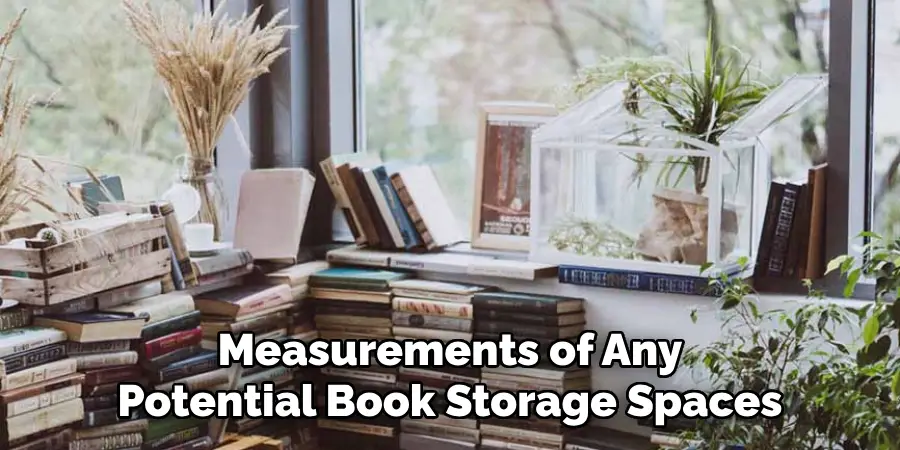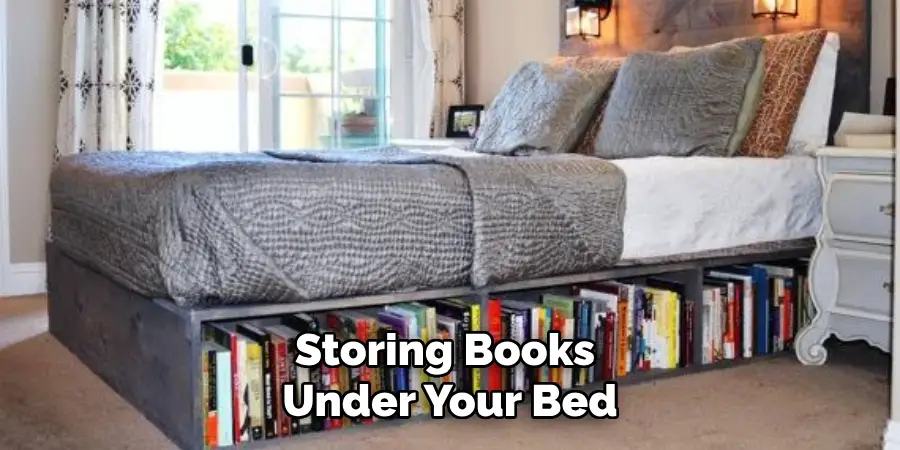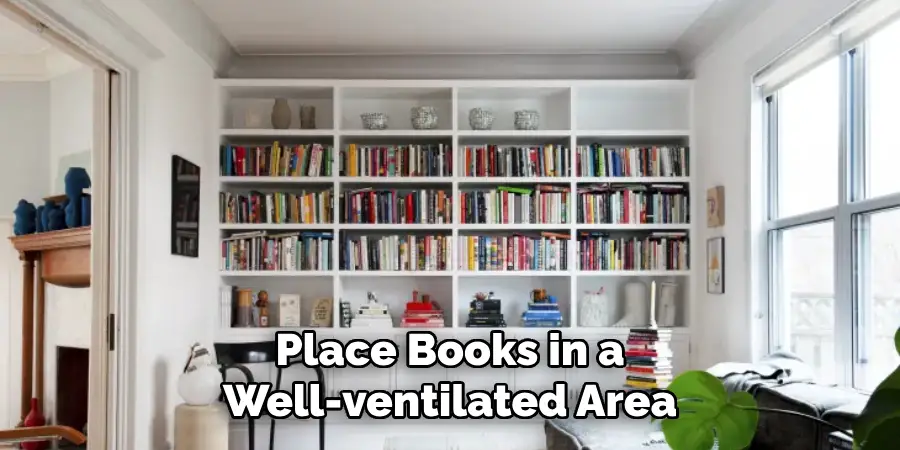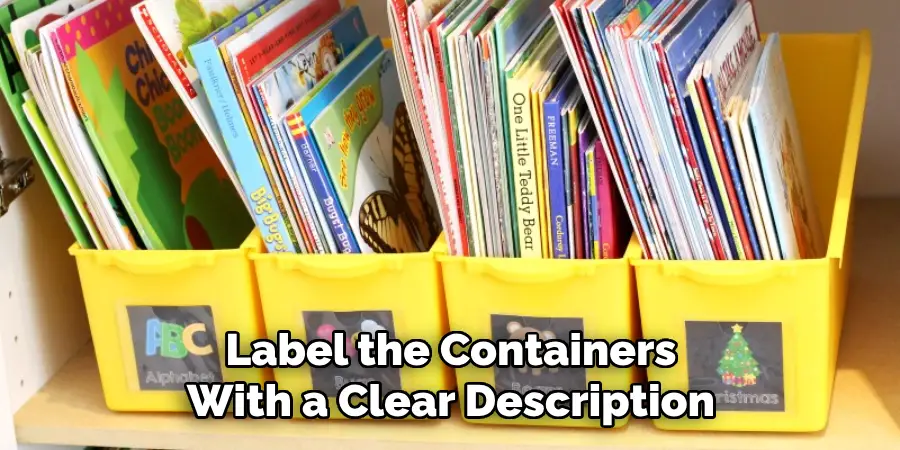Organizing books without a bookshelf can benefit those with limited space in their home or office. It also helps to create additional storage options while at the same time adding an element of creativity and style to your decor.

Organizing books without a bookshelf has several advantages. First, it allows you to store more books in a smaller space. This especially benefits those living in tight quarters or with limited storage space.
Additionally, organizing your books without a shelf can be more aesthetically pleasing than traditional bookshelves, as there are many creative ways to display and store your books without a shelf. In this blog post, You will learn how to organize books without a bookshelf.
Step-by-Step Processes for How to Organize Books Without a Bookshelf
Step 1: Inspect Your Space Configuration
It is essential to take a step back and carefully observe the space you have available to organize your books. Identify any areas of open wall space, nooks, existing shelving units, or furniture pieces that can be used for book storage.
Step 2: Measure Your Space
Take precise measurements of any potential book storage spaces you’ve identified in Step 1 and compare them to your book collection. Ensure that any potential space can accommodate the size and number of books you own.

For those with limited floor space, hanging shelves on the walls can be a great way to add book storage without taking up too much room. Look for wall-mounted shelving options or mount floating shelves to the wall.
Step 3: Invest in Stacking Book Crates
For a temporary or more mobile book storage solution, consider purchasing stacking book crates that can be used on the floor or even suspended from the ceiling. This is an easy and affordable way to store books without too much space.
Empty corners in a room can be great spaces to store books. Look for corner shelves or custom-built shelving units that fit snugly into empty corners and provide extra storage without taking up too much space.
Step 4: Store Books Under the Bed
Take advantage of unused vertical space by storing books under your bed. Invest in stacking crates or slide cardboard boxes under the bed.
Look around your home for other potential storage solutions you may have overlooked. Empty closets, the top of furniture pieces, or even underneath coffee tables can all be used to store your books without taking up too much space.

Step 5: Hang Fabric Pockets on the Wall
Consider hanging fabric pockets on the wall for a more creative and decorative way to store books. This is an easy and affordable storage solution for smaller collections of books without taking up too much space.
If you have furniture pieces in your home that need to be used, consider repurposing them into book storage. For example, an old dresser can store books in each drawer, or a chest of drawers can be turned into a makeshift bookshelf.
Step 6: Use Wall Hooks and Pegboards
If you want to add some decorative flair to your book storage, consider using wall hooks and pegboards. Use them to hang books on the wall or create interesting patterns with your book collection.
With these solutions, you can keep your favorite reads organized and easily accessible without sacrificing valuable floor space.
Precautions for How to Organize Books Without a Bookshelf
- Place books in a well-ventilated area but not exposed to direct sunlight. Sunlight can fade the colors of book covers, cause pages to turn yellow and deteriorate over time.
- Avoid placing books on the floor or other areas where they can become damaged by water or debris from outside elements. Books should always be kept in moist areas such as basements or garages.
- Keep books away from any heating, cooling, or ventilation vents that can cause them to become damaged by heat or cold drafts.
- Avoid placing heavy objects on top of books, which could dent covers and damage spines over time.
- If storing books for extended periods, consider wrapping them in a protective material such as bubble wrap to prevent dust from collecting on the covers.
- If storing books vertically, use bookends to keep them propped up and prevent them from falling over or damaging other items nearby.
- Ensure to periodically inspect the storage area for any signs of damage caused by pests or moisture. Immediately remediate the problem and protect your books if any damage is spotted.

Following these precautions will help ensure your books are safe and well-protected when stored without a bookshelf.
What Common Mistakes People Make While Attempting to Organize Their Books Without a Bookshelf?
When organizing books without a bookshelf, one of the most common mistakes people make is simply piling them up in a corner with no order or structure. This can lead to confusion when looking for a specific book and can also be an eyesore. It is important to find some way to neatly store the books so they are easy to access and look presentable.
Another area for improvement is measuring where they plan to store their books. Determining how much space you have before organizing your books is important, as this will ensure that everything fits neatly and doesn’t become overcrowded.
Finally, people may forget to sort their books by genre or size. This can make finding the book you are looking for difficult or cause them to become disorganized again. By sorting books into categories, such as fiction and non-fiction, it will be much easier to keep track of where everything is located.
What Are Some of the Benefits of Organizing Books Without a Traditional Bookshelf?
Organizing books without a traditional bookshelf can have many benefits. It can help save space and make finding the book you’re looking for easier. Additionally, organizing books allows for greater versatility and creativity in displaying them.
For example, you could use crates or baskets to store your books in an eye-catching way by arranging them in a pattern or color order. You could also use hanging shelves to display your favorite books on the wall or create a unique piece of art from your book collection by arranging them into an interesting shape, such as an archway or patterned design.
Another benefit is that it’s much easier to transport books when they are organized without a traditional bookcase. You can use bags, backpacks, or boxes to carry your books from one location to another. Lastly, organizing books without a bookcase can allow you to think outside the box and develop creative ways to store and display your books that suit your needs and preferences.
What Type of Maintenance is Necessary to Keep Books Organized Without a Bookshelf?
Organizing books without a bookshelf requires maintenance to keep things in order. For instance, it is important to ensure that the containers used for organizing the books are properly labeled and sorted. This helps with easy retrieval when needed.
Additionally, keeping track of which book goes where should be done regularly, especially if you have multiple containers and boxes of books. So, how can this type of maintenance be done? Here are some tips that you can follow:
- Label the containers with a clear description of what is inside so they are easy to find when needed.
- Create a system or spreadsheet for tracking which book goes where in each container. This makes it easier to keep track of the location and order of books.
- Periodically go through each container to ensure the books remain in the right place. This also helps with cleaning any dust or debris that may have accumulated over time.
- Check for any damages or wear and tear on the books, as this can affect their condition over time.

Organizing books without a bookshelf may seem daunting, but it can be done with consistent care and maintenance. Following the tips above should make this process easier and more manageable.
Conclusion
In conclusion, organizing books without a bookshelf can be an easy and fun project. With just a few creative ideas, you can find great solutions to store your books in any space. Whether you use crates, baskets, or other storage containers, you can arrange them in whatever way works best for you.
By considering how much space you have and what type of storage works best for your needs, you can ensure that all of your books are organized and easily accessible.
With these tips, you can quickly and easily set up a book organization system without needing a bookshelf. This article has been beneficial for learning how to organize books without a bookshelf. Make Sure the preventive measures are followed chronologically.


